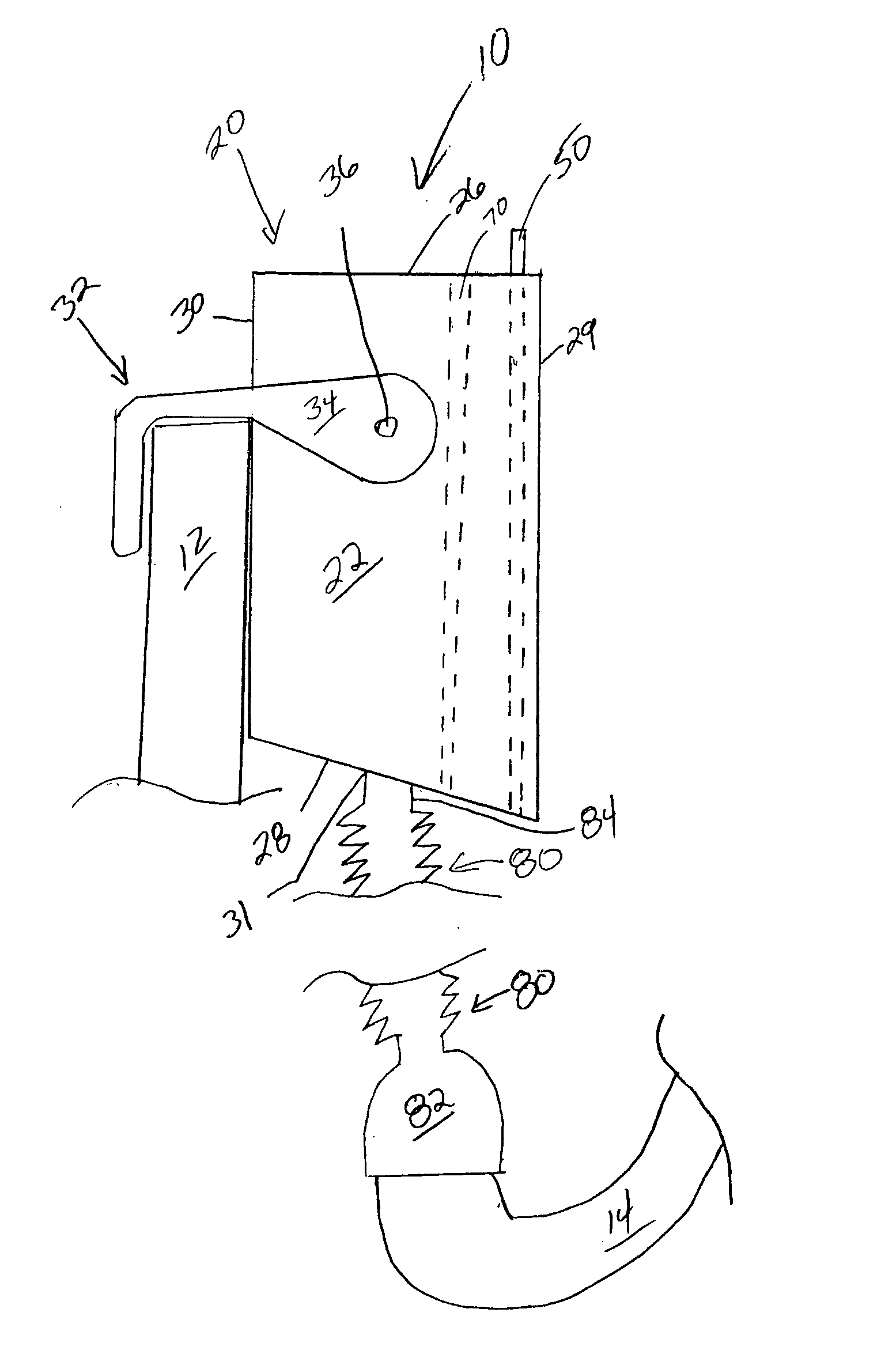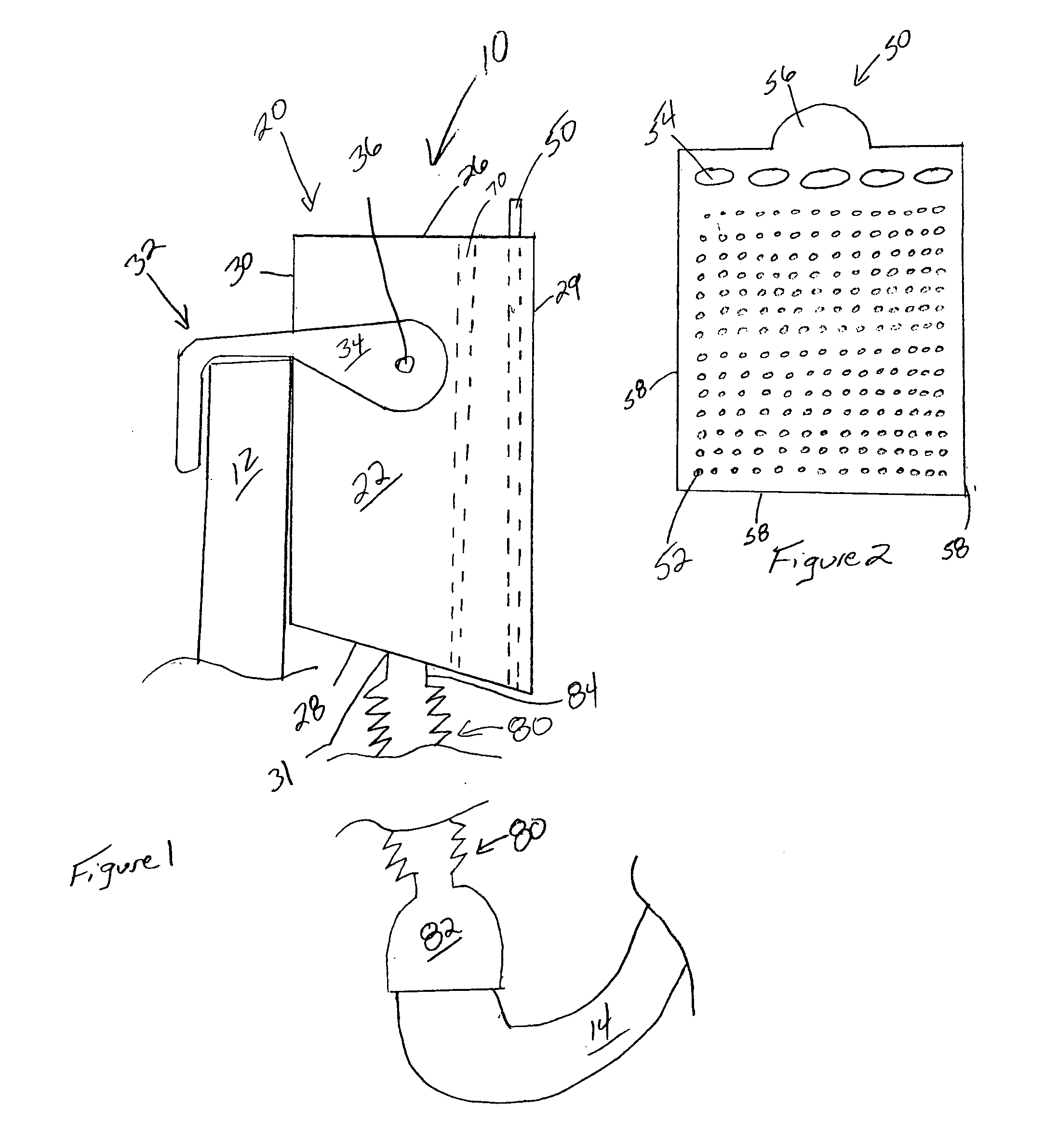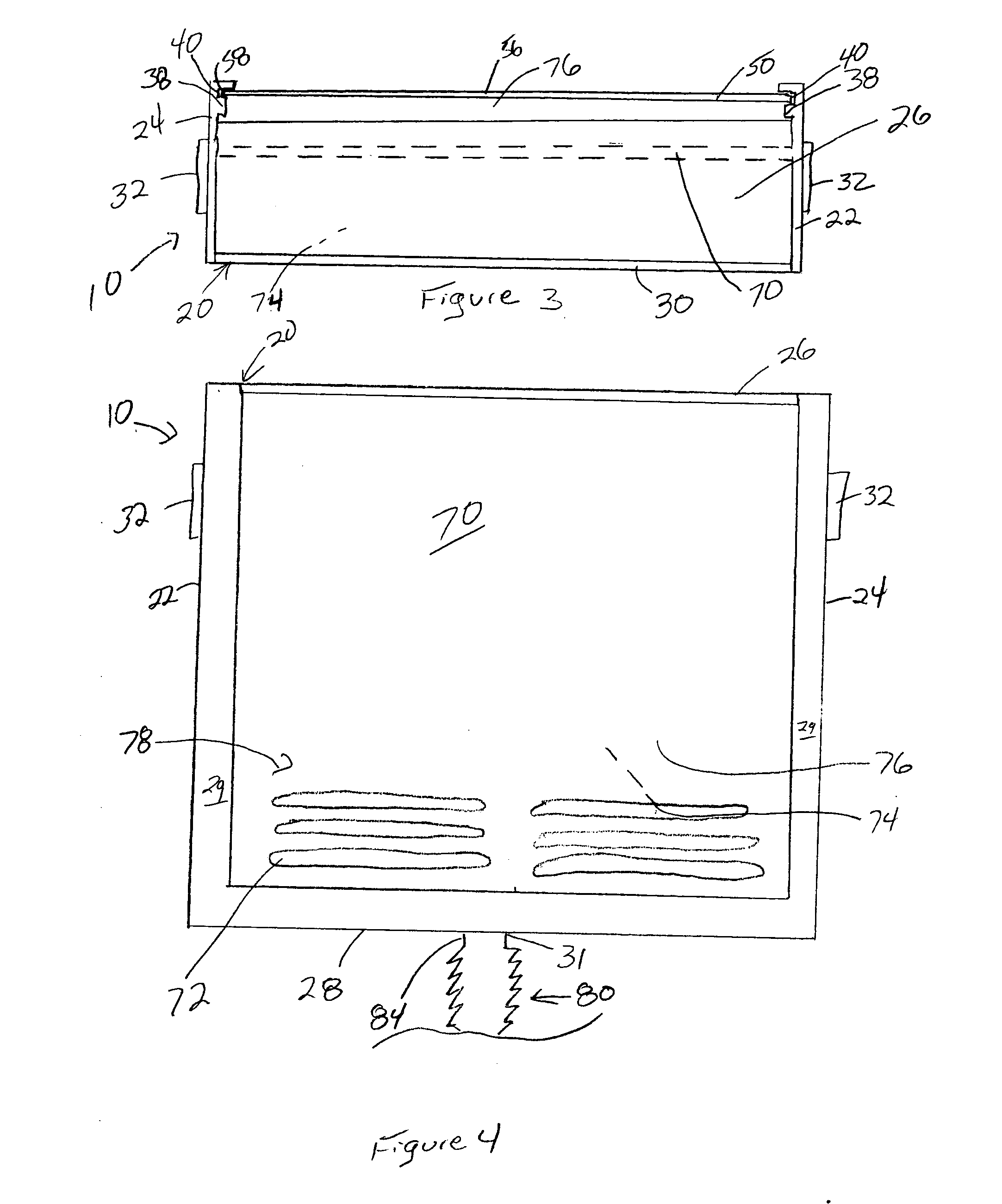Lint trap
a technology of lint traps and traps, applied in the field of lint, can solve the problems of long-standing problems such as lint collection, potentially expensive repairs to be paid for by the home owner, and failure to teach a system suitable for adequately slowing down the discharge stream, etc., and achieve the effect of flow ra
- Summary
- Abstract
- Description
- Claims
- Application Information
AI Technical Summary
Benefits of technology
Problems solved by technology
Method used
Image
Examples
Embodiment Construction
[0022] The lint trap 10 of the present invention is provided with a housing 20, a lint collection plate 50, a chamber divider wall 70 and an adapter 80. The chamber divider wall 70 may permanently separate the interior of the housing 20 into two chambers (described below). The lint collection plate 50 is removably received within the housing 20. The adapter 80 may communicate water from a washing machine hose 14 to the housing 20. Each of these components will be discussed in further detail below.
[0023] The housing 20 may have a first side wall 22, a second side wall 24, a top wall 26, a bottom wall 28, a front wall 29 and back wall 30. The bottom wall 28 may define an aperture 31. The bottom wall 28 preferably is positioned off horizontal, e.g., slanted, to cause water to move from adjacent the back wall 30 toward the front wall 29. The front wall 30 preferably is U-shaped as shown in the drawing, which is covered by the lint collection plate 50, when inserted.
[0024] At least one...
PUM
| Property | Measurement | Unit |
|---|---|---|
| perimeter | aaaaa | aaaaa |
| flow rate | aaaaa | aaaaa |
| pore size | aaaaa | aaaaa |
Abstract
Description
Claims
Application Information
 Login to View More
Login to View More - R&D
- Intellectual Property
- Life Sciences
- Materials
- Tech Scout
- Unparalleled Data Quality
- Higher Quality Content
- 60% Fewer Hallucinations
Browse by: Latest US Patents, China's latest patents, Technical Efficacy Thesaurus, Application Domain, Technology Topic, Popular Technical Reports.
© 2025 PatSnap. All rights reserved.Legal|Privacy policy|Modern Slavery Act Transparency Statement|Sitemap|About US| Contact US: help@patsnap.com



